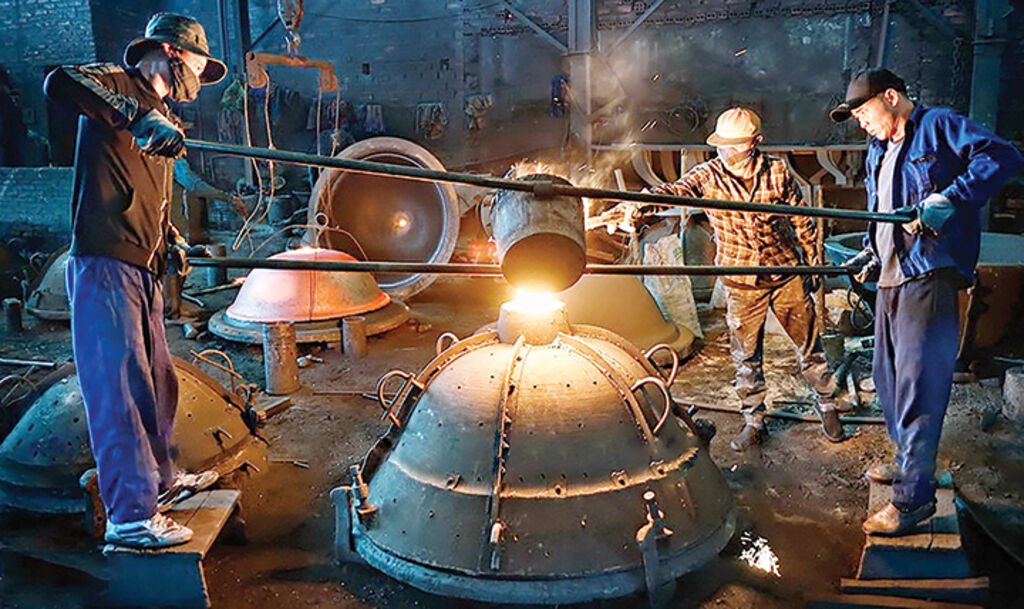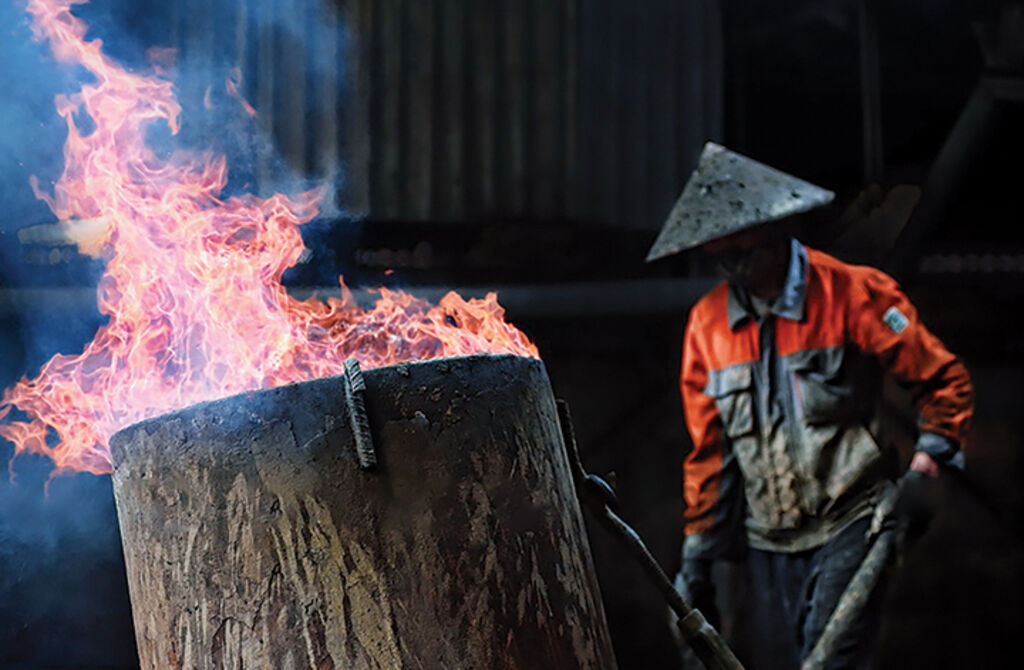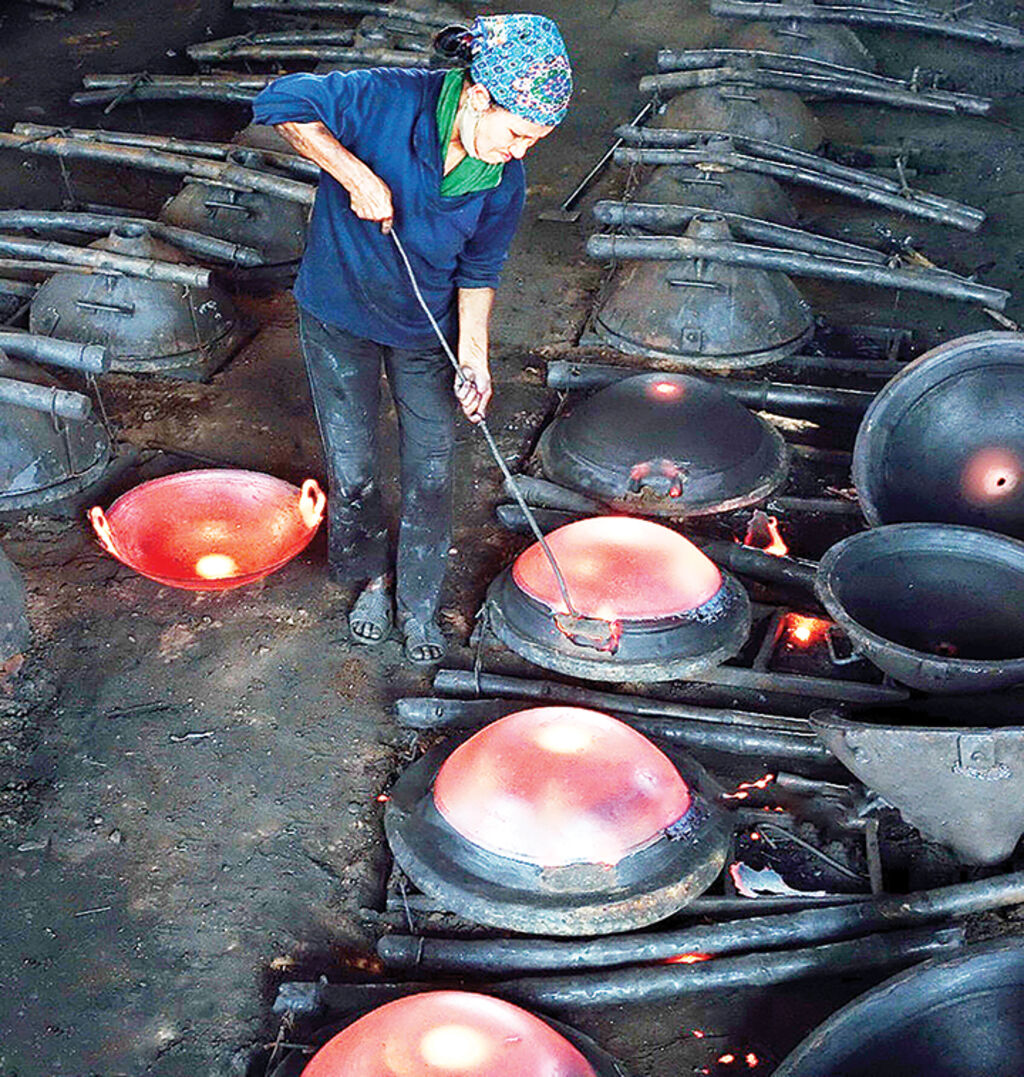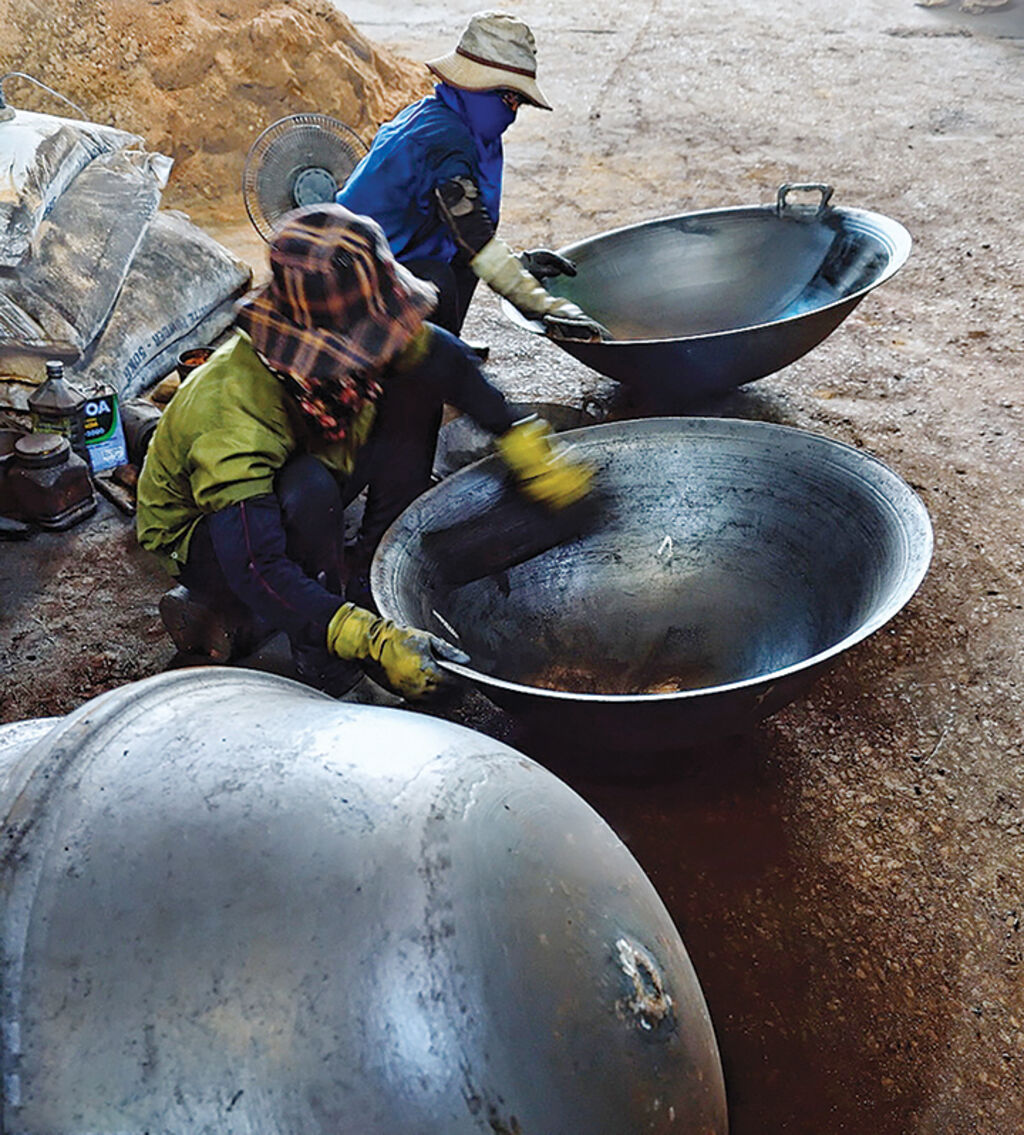 |
| Pouring molten iron into a mold_ Photo: Ly Hoang Long/VNA |
Located in Thuy Nguyen commune of Hai Phong city, My Dong village has preserved its traditional casting craft for nearly a century, and its history reflects tradition, development and key turning points.
In the early 20th century, a local resident named Nguyen Van Cau, after learning casting techniques in Thanh Hoa province, returned to his hometown, established the first coal-fueled iron furnace in the village, and taught the techniques to local people. In the early days, the village’s main products were simple hand-cast tools such as plowshares and household items. Over time, the craft developed and villagers formed a casting guild to support one another in their work.
 |
| Furnaces glow red hot day and night at My Dong casting village__Photo: Ly Hoang Long/VNA |
The most significant turning point for My Dong came in 1938, when a French ship docked at Hai Phong port for loading and required a new one-ton “counterweight base” to replace a broken part it carried upon arrival. The village’s artisans united to take on the challenge. Under the guidance of craft founder Nguyen Van Cau, skilled and dedicated craftsmen kept eight furnaces burning day and night, successfully producing the replacement component to the customer’s exact specifications. The achievement brought resounding success and affirmed My Dong’s reputation, spreading its name far beyond the local area.
 |
| Breaking molds to release cast products__Photo: Ly Hoang Long/VNA |
From that point, the craft village had the opportunity to expand production and enhance its skills and capacity. During wartime, the village’s skilled craftsmen also took part in the production of weapons and machinery and vehicle parts, a clear sign of remarkable growth in both scale and expertise.
What began as a small village with only about 10 casting households in the early 1990s has since grown into a hub with nearly 100 iron-casting workshops and 15 bronze-casting ones, along with dozens of mechanical and forging workshops. Today, around 30 households have transformed into companies, applying modern machinery to expand production capacity and scale.
My Dong’s products are now remarkably diverse, serving a wide range of sectors. In construction and urban infrastructure, the village produces manhole covers, lampposts, and decorative cast-iron elements. For heavy industry, it supplies water pumps, gears, grinder parts, and hydraulic gearboxes. The village is also known for mechanical products such as sewing machine legs and motorcycle frames. In addition, it manufactures sophisticated equipment for the shipbuilding industry, including fireproof doors, boilers, deck hatches, propellers, and anchor chains.
 |
| Grinding and polishing rough cast-iron pans__Photo: Ly Hoang Long/VNA |
The casting process itself is demanding yet meticulous, requiring both experience and precision. To produce a cast-iron pan, for example, the craftsman must prepare a two-part mold consisting of the top (cope) and the bottom (drag). In earlier times, these single-use molds were made from locally available clay and sand. Today, however, for casting non-ferrous metals such as aluminum, bronze or zinc, My Dong craftsmen employ modern molds made of cast iron and steel, bound with plastic or glass materials.
After the mold is prepared, raw materials such as scrap iron or ingots are melted in a furnace. The molten metal is then poured steadily into the mold to ensure it fills every corner without creating air bubbles. Solidification usually takes two to four hours, after which the mold is broken open to release the cast product. The rough piece is then ground and polished to achieve its final form.
The development of My Dong is not only reflected in its products but also in its people. The village has nurtured many talented artisans who have made important contributions to national cultural projects. Among them is artisan Nguyen Van Soai, the grandson of founder Nguyen Van Cau, who mastered bronze casting techniques and created the Memorial to Heroic Martyrs on Bac Son street in Hanoi’s Ba Dinh ward. The monument stands as a lasting testament to the exceptional skills of My Dong’s craftsmen.- (VLLF)









